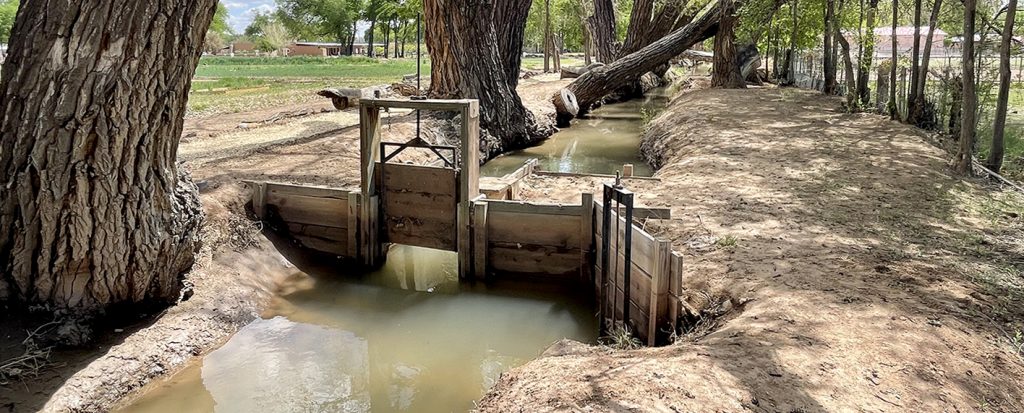
Indigenous people of the Southwest have long irrigated their fields by digging earthen canals and by using flood irrigation. These practices go back well over a thousand years. The governance structure is part of pueblo spirituality. Since water is feminine, women play an important role in issues involving water. State laws do not apply to pueblo water distribution practices.
Acequias also have a very long history. The word comes from the Arabic and traces back 8,000 years to the Middle East. Moors from northern Africa brought the practice into Spain where not only were acequia leaders elected but there was also a court system. When Onate led European settlers into this mid-Rio Grande region, they forced indigenous people to dig acequias for their villages, knowing how critical water was to both human and plant life. There are now 640 acequias across New Mexico.
Acequias are a community form of irrigation led by an elected mayordomo. Users of the ditch have an agreed upon code as to when and where work will be done to keep the ditch clean and functioning. Some consider acequias to be the first form of democracy in the U.S. because of their one person/one vote form of governance. New Mexican acequia laws have evolved to provide easements across public and private property so the ditch users always have access for maintenance. The legal descriptions protect New Mexican water traditions. But acequias are about more than water…
Continue reading
